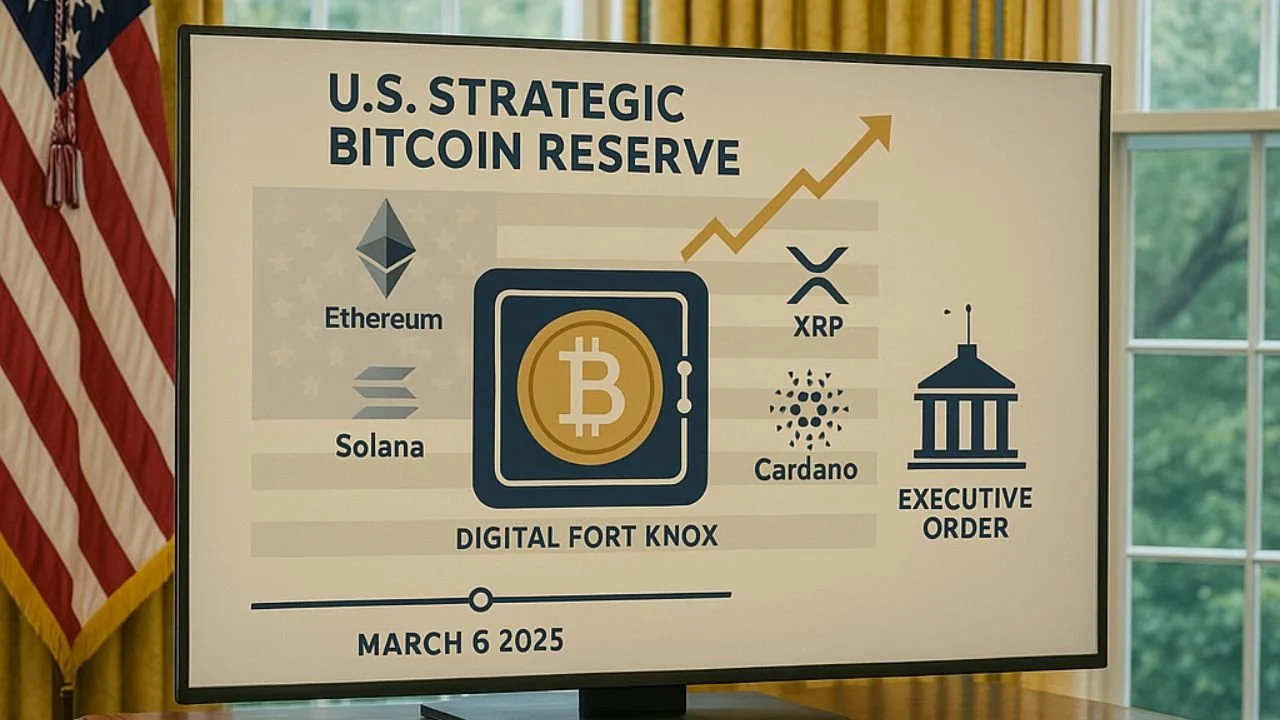The US Strategic Bitcoin Reserve: A New National Asset?
On March 6, 2025, President Donald Trump signed an executive order creating the United States Strategic Bitcoin Reserve (SBR). This new policy treats Bitcoin as a national asset, similar to gold or oil reserves. The government also established a "Digital Asset Stockpile" for other cryptocurrencies, including Ethereum, XRP, Solana, and Cardano.
What Happened?
The US government owns about 200,000 Bitcoin from criminal seizures. The executive order prevents the government from selling this Bitcoin, creating a permanent reserve. The White House Crypto Czar David Sacks called it a "digital Fort Knox."
The markets responded quickly. Bitcoin's price jumped to $90,000 shortly after the announcement before settling at $85,000 the next day. Other cryptocurrencies also saw price increases, with Cardano rising by 60%.
How the Community Reacted
The crypto community had mixed reactions. Some called it "the most bullish signal in Bitcoin's history," while others viewed it as a "PR stunt." Many were disappointed that the government didn't announce plans to buy more Bitcoin.
Industry leaders also had different opinions. Coinbase CEO Brian Armstrong suggested focusing only on Bitcoin and comparing it to gold. Ripple CEO Brad Garlinghouse praised the inclusion of other cryptocurrencies.
What is the Potential Impact?
This government endorsement could reduce Bitcoin's price volatility, which has been a major concern for investors. However, if the Treasury decides to buy more Bitcoin in the future, prices could rise significantly due to Bitcoin's limited supply of 21 million coins.
The SBR could start a global competition, with other countries increasing their cryptocurrency holdings. El Salvador already holds 6,000 Bitcoin, and there are rumors that the UAE, Japan, and Russia are building their reserves.
What is the Bigger Picture?
The SBR represents a shift in how governments view digital assets. Bitcoin now stands as a potential alternative to traditional currency systems, which could strengthen crypto's position in mainstream finance.
However, challenges remain. Bitcoin experienced a 17% price drop in February 2025, showing it's still volatile. Federal Reserve Chair Jerome Powell noted that Bitcoin's short history can't compare to gold's centuries-long track record as a store of value.
There are also political concerns. Without congressional legislation, a future administration could reverse this policy. Critics like Senator Warren have demanded more transparency about the decision, especially given Trump's connections to cryptocurrency ventures.
In Conclusion…
The Strategic Bitcoin Reserve represents a bold step into cryptocurrency adoption at the national level. It raises Bitcoin's profile as a legitimate asset while boosting other cryptocurrencies. Whether this proves to be a smart long-term strategy or a risky experiment, it marks a significant moment in cryptocurrency's evolution from an emerging technology to a government-recognized asset class.

